Create Restaurant App: Features, Cost & Tech Details
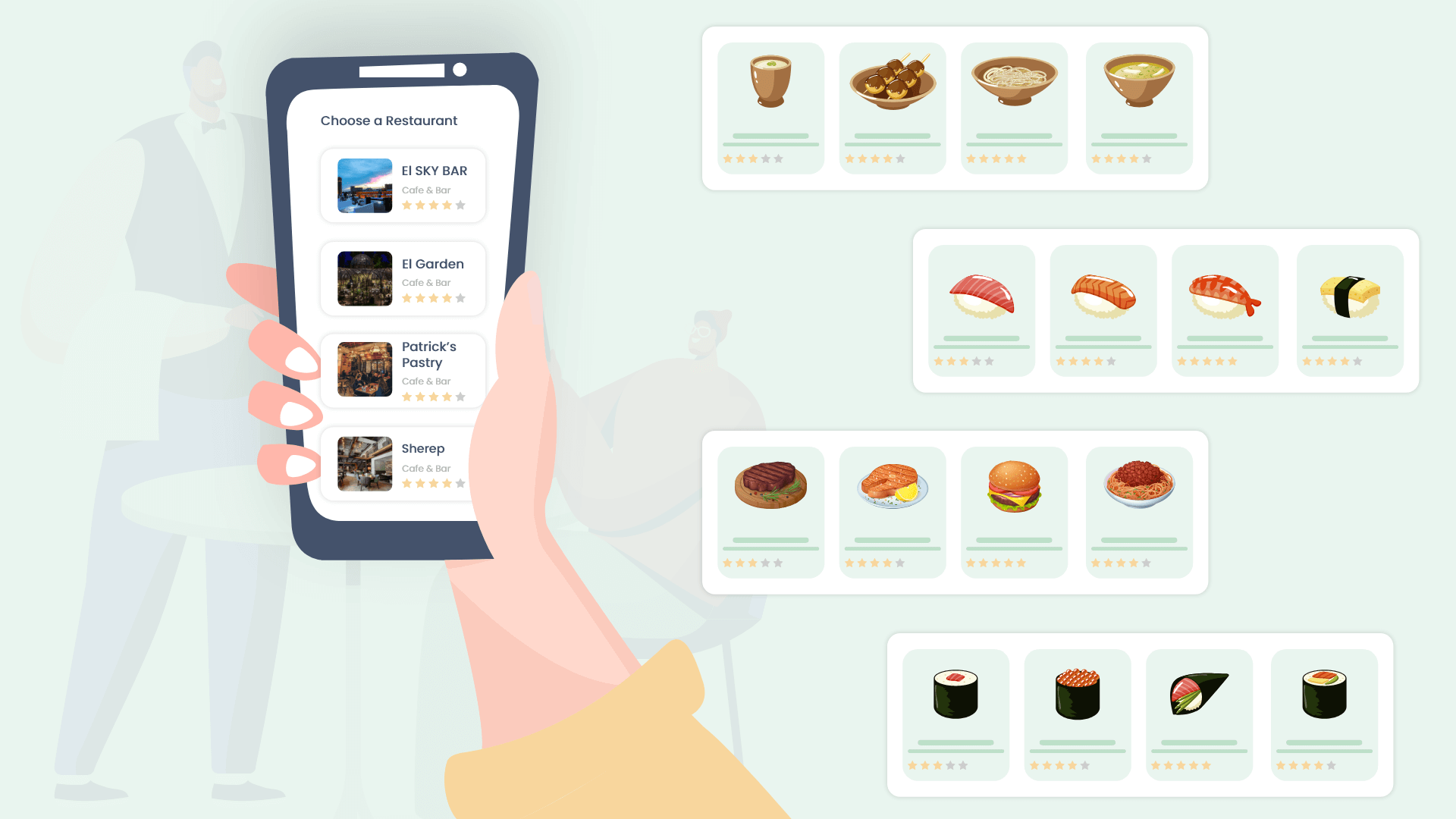
With the increasing use of mobile, most businesses can’t go around without a branded app.
The restaurant industry is no different.
You might be wondering why to create your own app if there are dozens of third-party platforms where you can list your restaurant business.
According to research, over 52% of customers have more trust in a restaurant’s own branded app than a third-party food platform.
If you don’t have a branded app, you’re probably losing some revenue.
As one of the most extensive guides for restaurant app development, this article will reveal the best ways to create a restaurant app.
Here’s a quick overview of its contents:
- Key business reasons to create a restaurant app
- Restaurant app development step by step
- Innovative ideas for restaurant mobile app development
- Restaurant app development cost
Let’s explore all the aspects of restaurant mobile app development.
Why Your Restaurant Needs a Mobile App in 2024
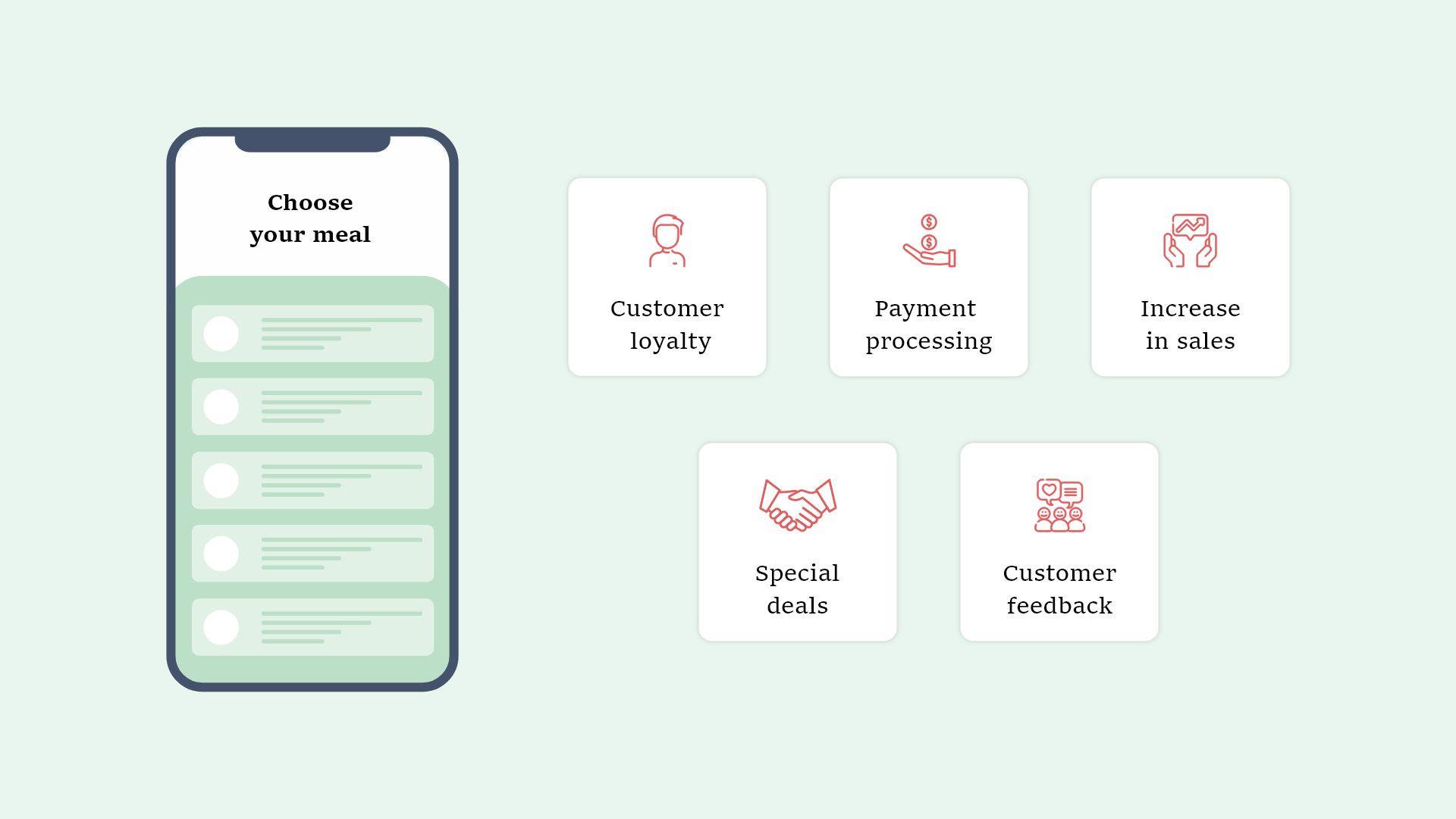
So, why does a restaurant business need an app?
Around 56% of customers prefer to order food delivery through an online app or a website.
But food delivery is not the only reason customers turn to their smartphones. They use apps to view restaurant menus and prices, check for operation hours, search for restaurants nearby, look for restaurant reviews, etc. 60% of local searches on mobile convert into buying customers within the hour.
A restaurant and food delivery app is a win-win solution for customers and business owners. From the business perspective, the brand app has the following benefits.
- Customer loyalty
Today, having an online presence for an offline business determines whether you can compete or not.
One of the main reasons to create a restaurant app is to improve customer experience. With the help of an app, restaurants can provide different features such as menu lookup, instant access to the information, search for delivery options, etc. Customers that have a great experience with a restaurant are more likely to turn into loyal customers.
- Simplified payment processing
In the modern world, many customers prefer the convenience of paying online and via an app. The global mobile payment market size is valued at USD 965.9 Billion in 2022 and is estimated to register a CAGR of over 14.5% between 2023 and 2032.
Enabling customers to pay in your restaurant with their preferred payment method improves customer experience and leads to higher loyalty.
- Increase in sales
The most crucial reason for restaurant mobile app development is a chance to increase profit with less effort and resources. There are several ways a business can achieve that: by offering food delivery, allowing customers to book a table via an app and avoid long waiting lines, or even checking the menu and working hours.
- Special deals
Is there a better way to turn one-time customers into returning ones than by offering a loyalty program, a special deal, or a coupon for the next visit? Restaurant app development can help you with customer retention.
- Customer feedback
A few years ago, restaurants had to conduct costly surveys and interviews to determine what customers thought about their venue. Businesses can get customer feedback instantly and tailor the processes to provide better service and customer experience with restaurant apps.
How to Create a Restaurant App: Step-by-Step Process
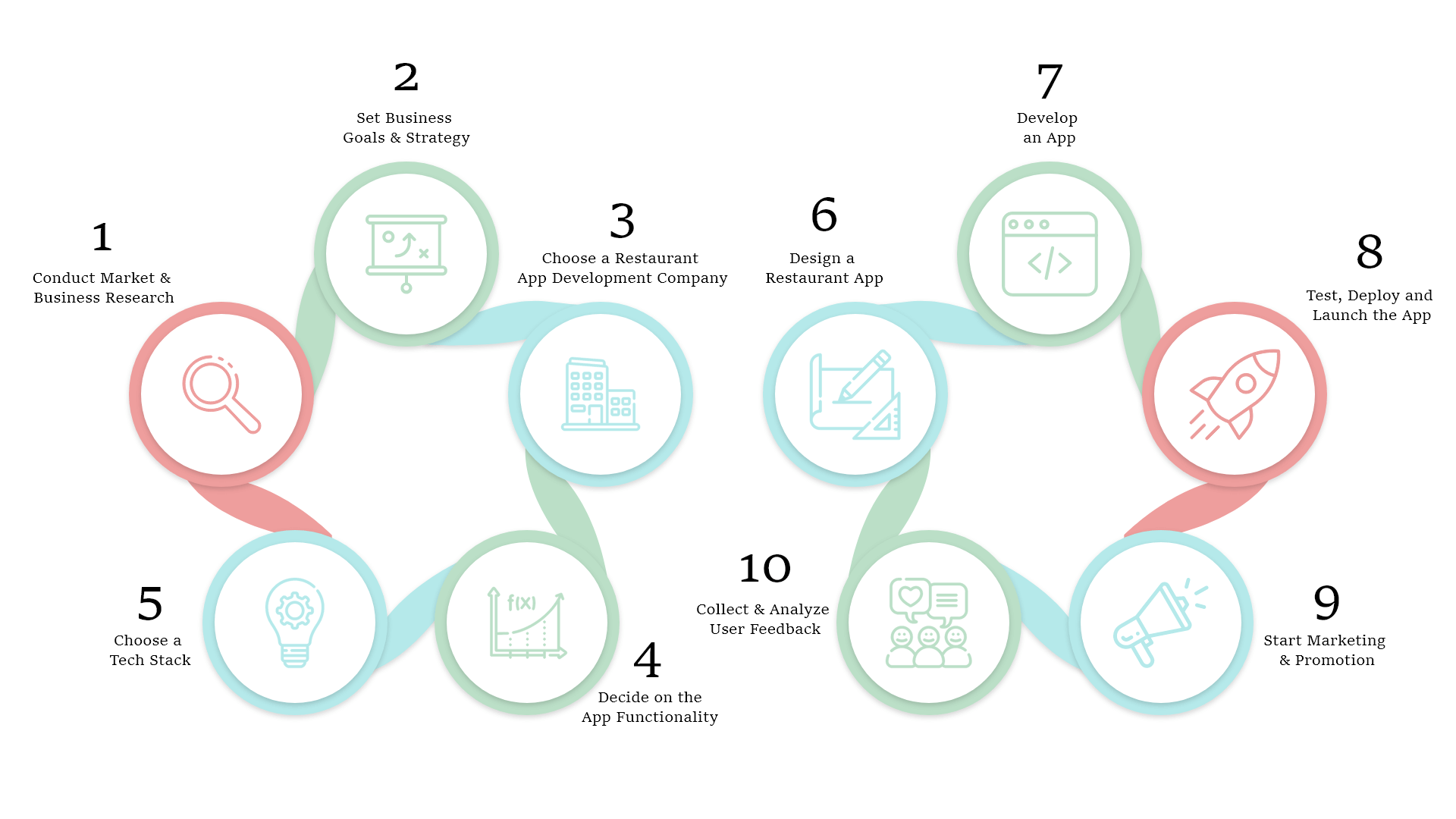
So, how can you create an app for your business?
App development is a complex process that consists of different stages:
- Conduct market and business research
- Set business goals and strategy
- Choose an app development company
- Decide on the app functionality
- Choose a tech stack
- Design a restaurant app
- Develop an app
- Test, deploy and launch the app
- Start marketing & promotion
- Collect and analyze user feedback
- Start ongoing development and support
Let’s deep dive into each step.
Step 1: Conduct Market & Business Research
The main secret to creating a successful restaurant app is knowing the market state, key app types, and the major players. That’s why market and business research should be the number one step in the development process.
Your app should solve the demand of customers and the requirements of your business.
Start with the analysis of your target audience. Find out what problems your customers face and learn what services they would like a restaurant to provide. After you identify the pain points, you will be able to offer a solution that will be in high demand among customers.
Today, there are several restaurant app types that you can develop for your business
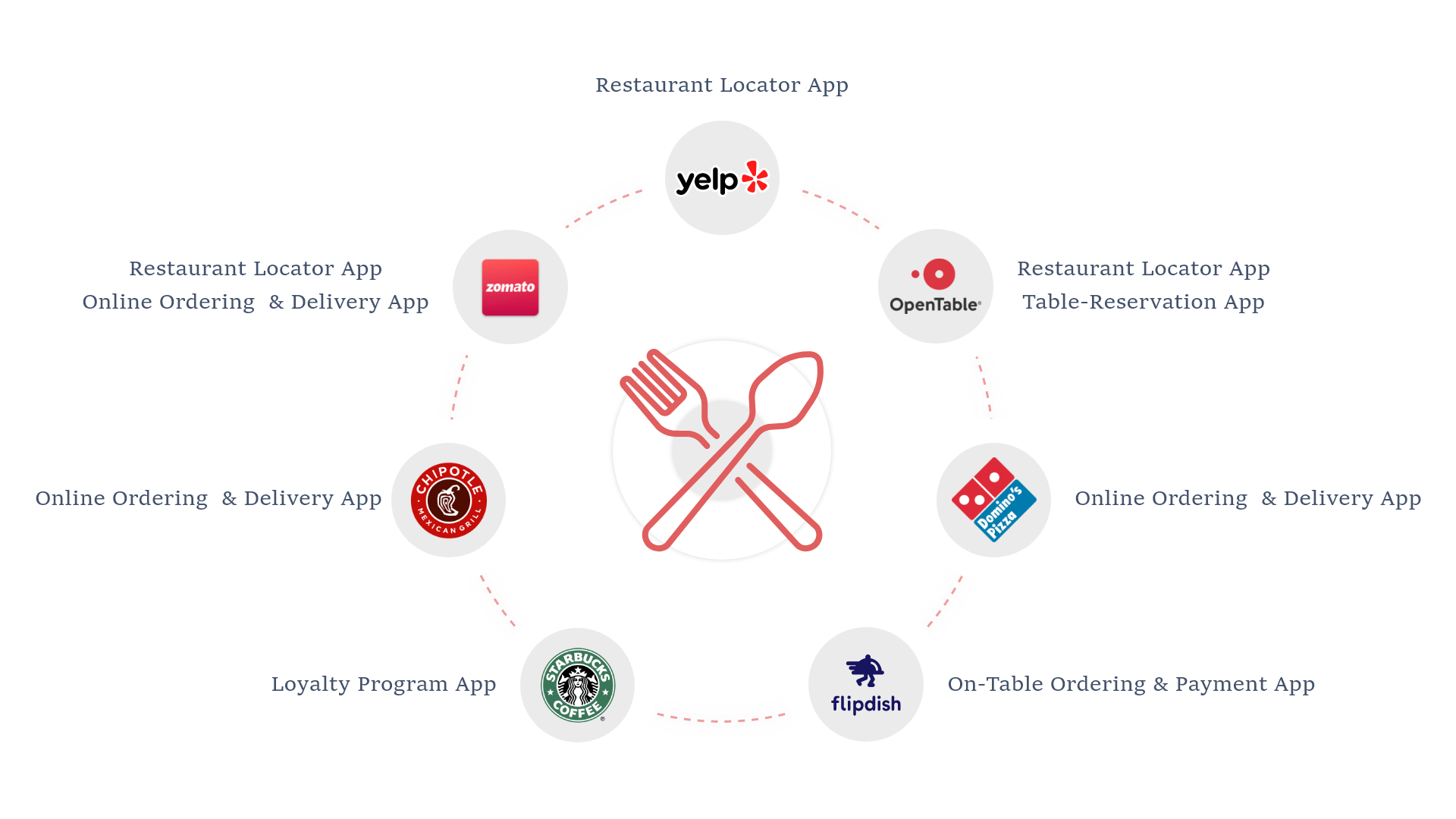
- Restaurant locator app
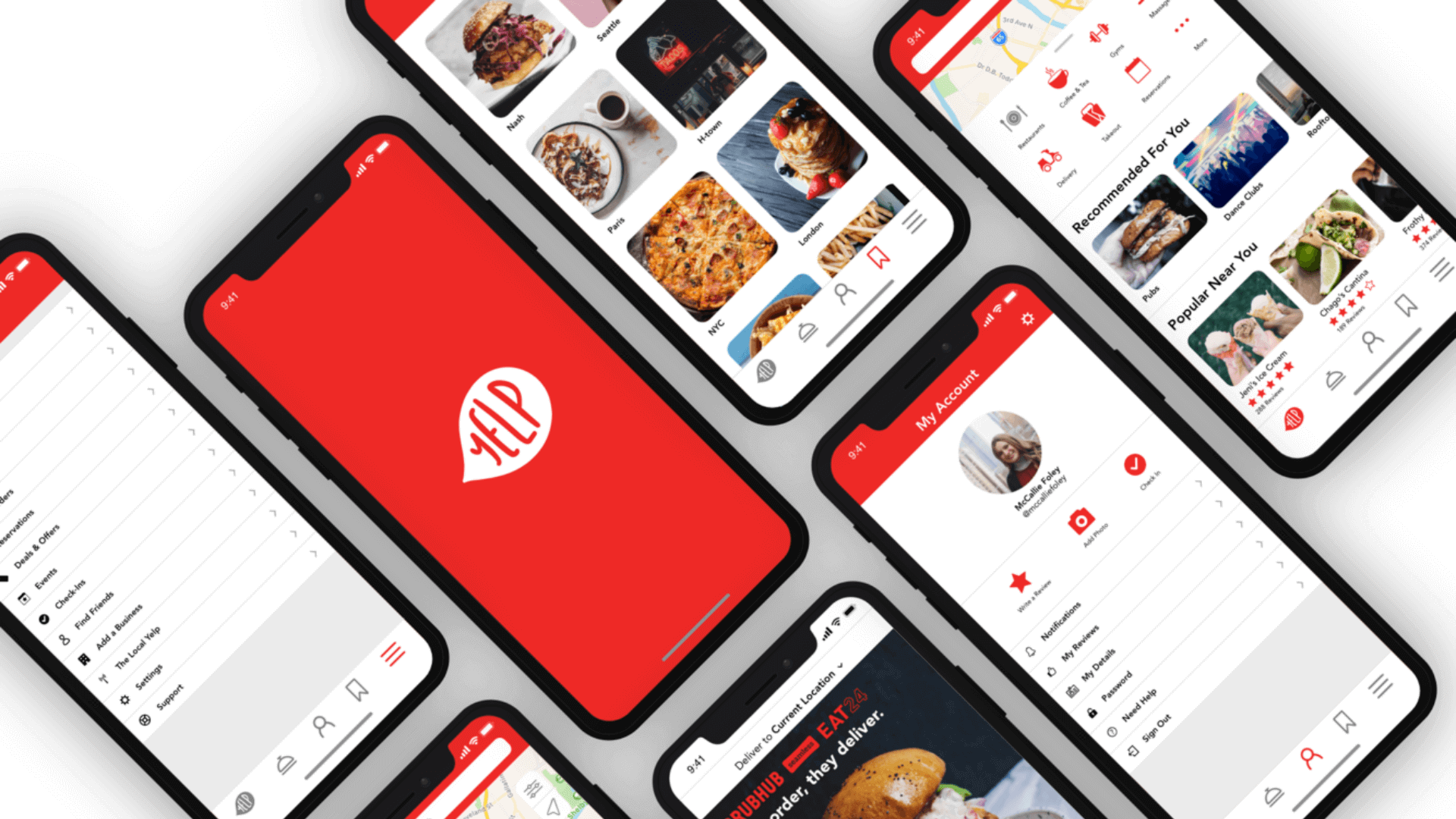
A restaurant locator app is one of the types you may consider. This type of app allows customers to find dining locations nearby. The app includes a database of all restaurants, cafes, and other dining locations nearby. Google Places API is a great solution for Android app development. Combined with geofencing, this app will help you attract new customers to your restaurant.
However, the functionality of this app type is not limited to just showing locations. You might also need to consider adding the feature to write and show reviews, photos, view menus and get detailed directions to the restaurants.
Essential features:
- User profile
- Restaurant search (with filters)
- Restaurant listings
- Restaurant information and menus
- Photo gallery
- Reviews and rating
- Geolocation and directions
Examples of restaurant locator apps: Zomato, OpenTable, Yelp
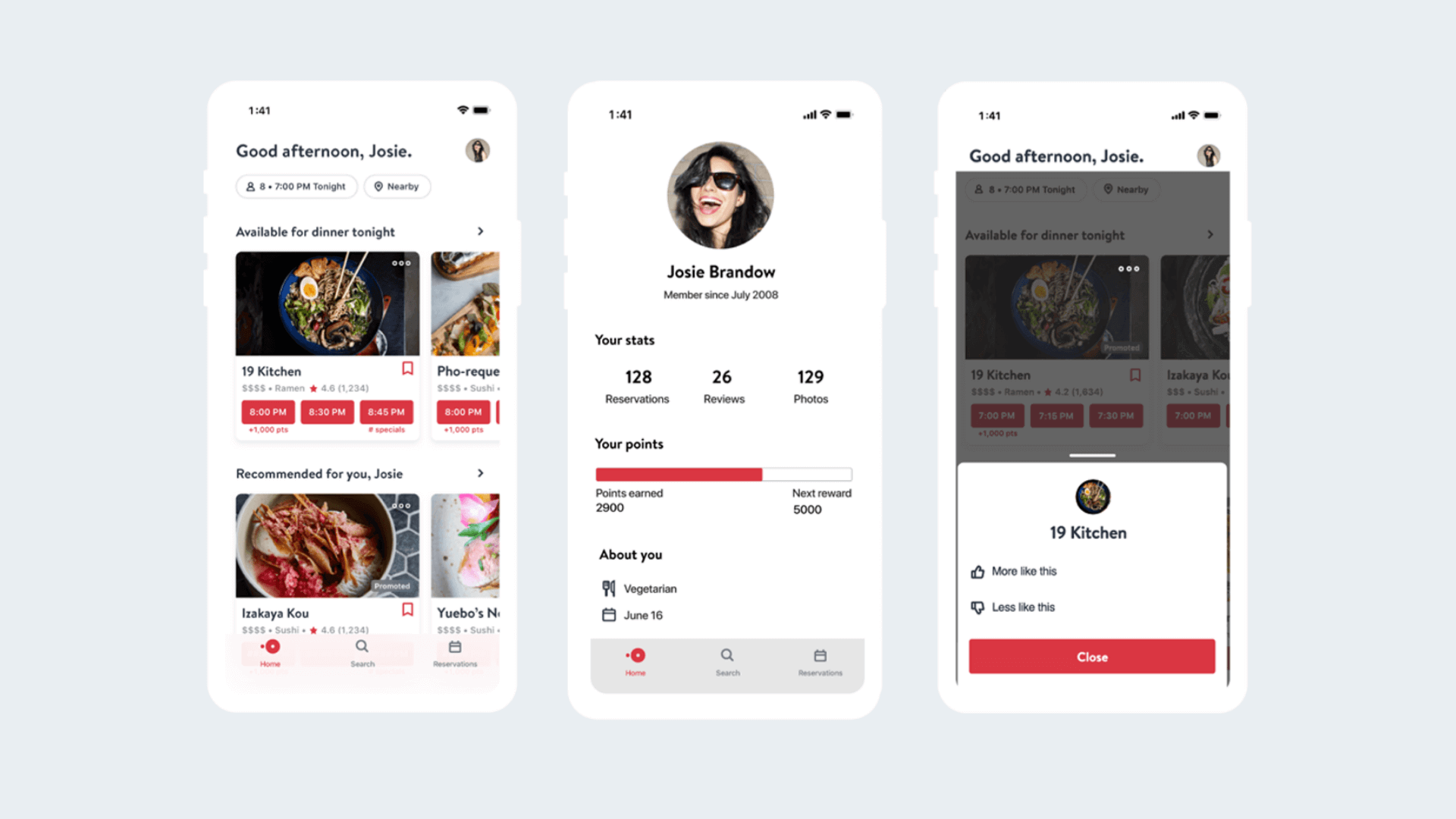
Today, customers don’t like calling to book a table with their favorite restaurant. They prefer to make a reservation online at any time suitable to them. Such apps usually provide information about working hours, the busiest hours, and a calendar with available time slots.
Essential features:
- User profile
- Calendar with free dates
- Table booking
- Geolocation
- Menu
- Ratings and reviews
Examples of table reservation apps: OpenTable
- Online ordering and delivery app
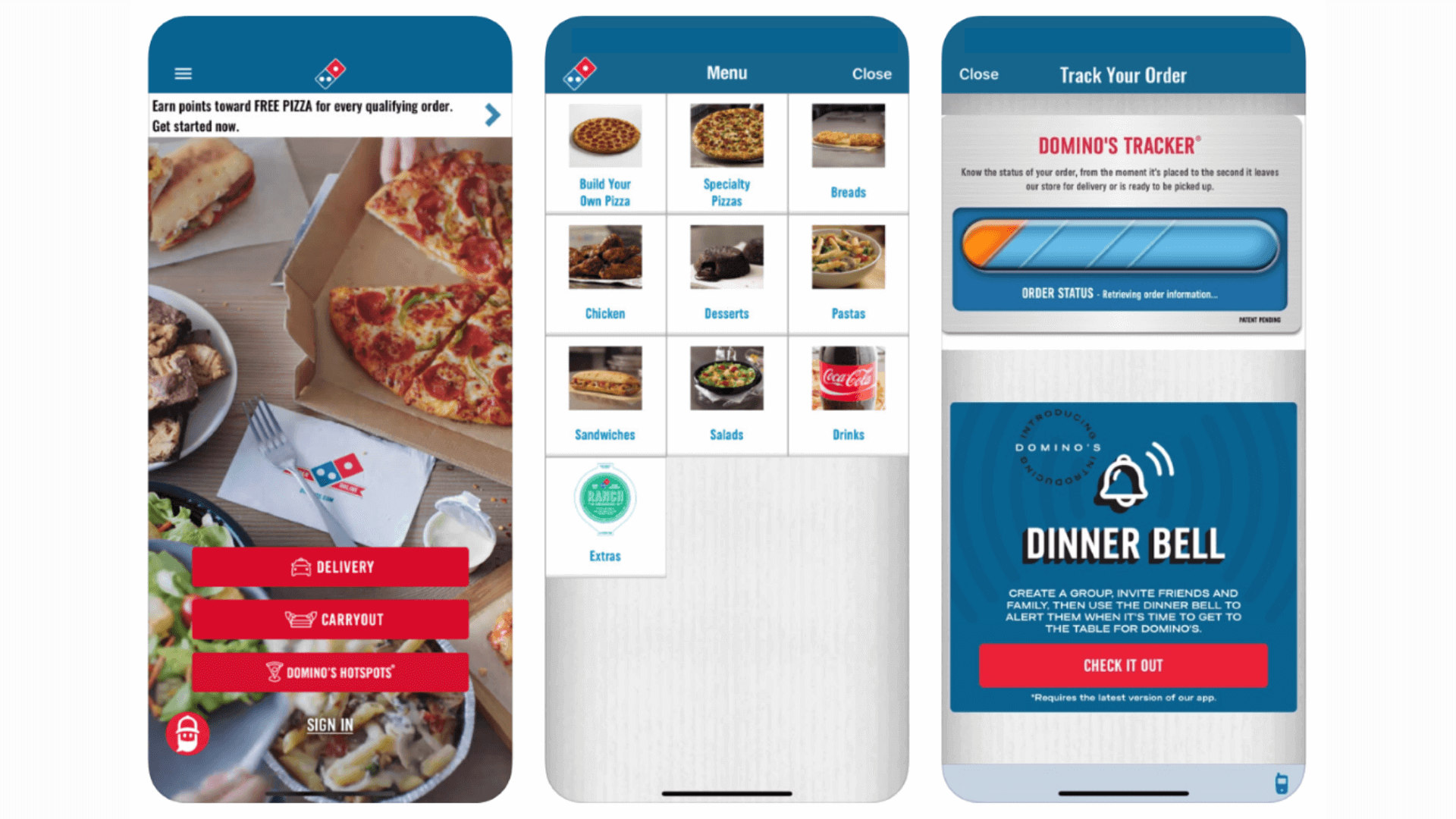
Food delivery is growing in leaps and bounds amid the pandemic and lockdowns worldwide. The online food delivery market worldwide is US $1.22tn in 2024, and it is predicted to reach $223.7 billion by 2027 at a CAGR of 11%. Today is the perfect time to start creating a food delivery app.
Two types of apps can be developed:
- Full-service application – an application that you create for your own business. Like Domino’s Pizza, a branded app allows customers to order food at one restaurant.
- Delivery aggregator app - enables restaurant owners to connect to food delivery service providers delivering orders from restaurants to customers. The Zomato app is a great example.
When developing a restaurant app, don’t forget about the rising popularity of Order Online Pick Up in Store (in our case, in a restaurant) services. Such applications allow placing orders online and dropping by the restaurant to pick up the order personally. Such functionality is extremely useful at the busiest hours for restaurants offering take-out. Chipotle is a great example of food ordering app development.
Essential functionality:
- User profile
- Restaurant search
- Menu
- Payment card adding
- Automatic payments
- Order details and history
- Order booking
- Delivery status
- Notifications
- Ratings and reviews
Examples of online ordering and delivery apps: Zomato, Chipotle, Domino’s Pizza
- On-table ordering and payment app
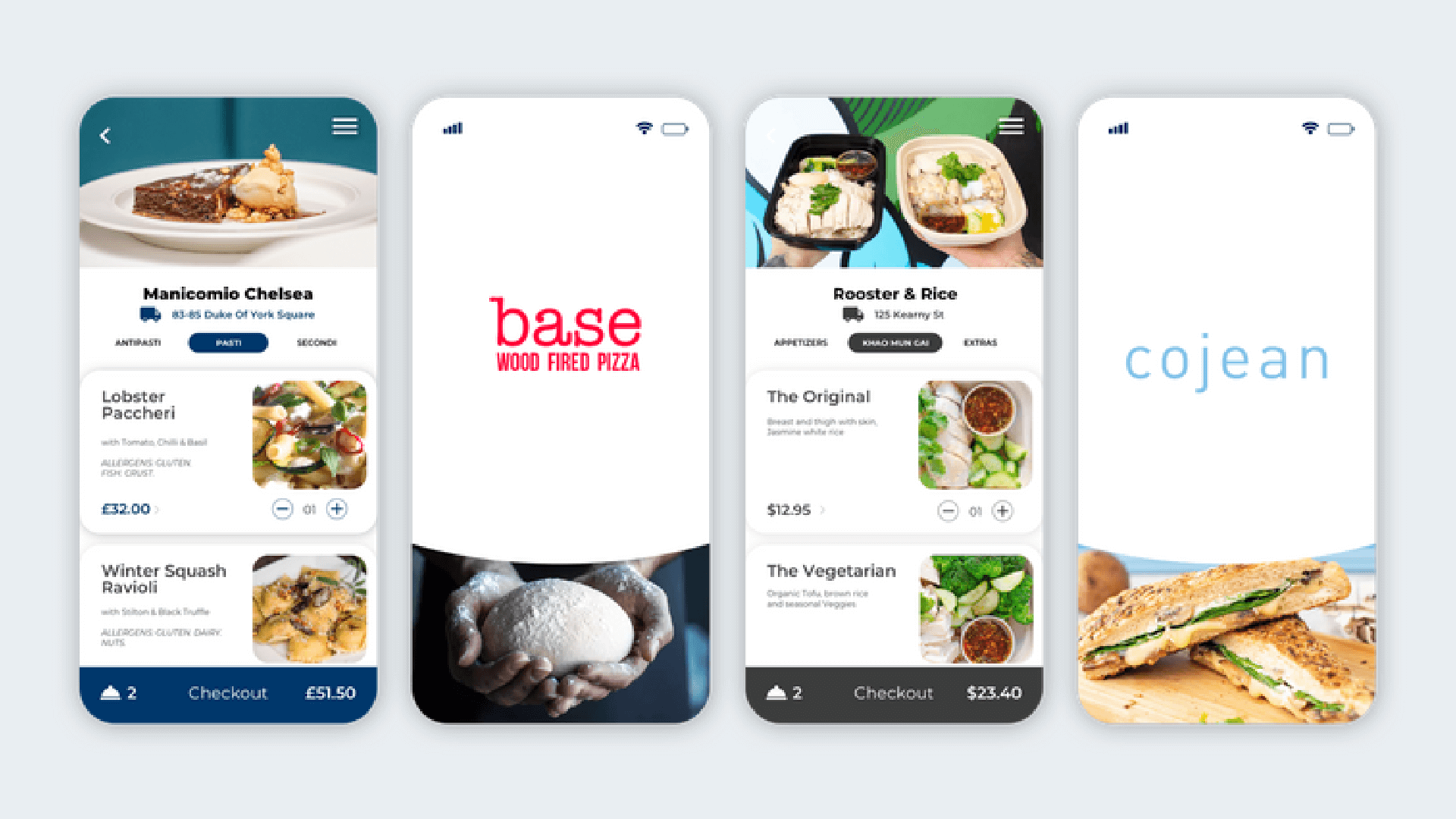
This type of app has become quite popular recently. Because of the pandemic precautions, many restaurants have already created a mobile app for restaurant ordering that allows customers to view the menu, make an order and pay for it with their smartphone. This way, you can eliminate the need to use paper menus and provide more payment options for customers, allowing them to choose the one they prefer.
Essential functionality:
- Menu
- Order details
- Online payment
- Reordering
- Loyalty programs
- Bill split
- Integration of mobile wallets
- Tipping and automatic tip addition
Examples of on-table ordering and payment apps: Flipdish
- Loyalty program app
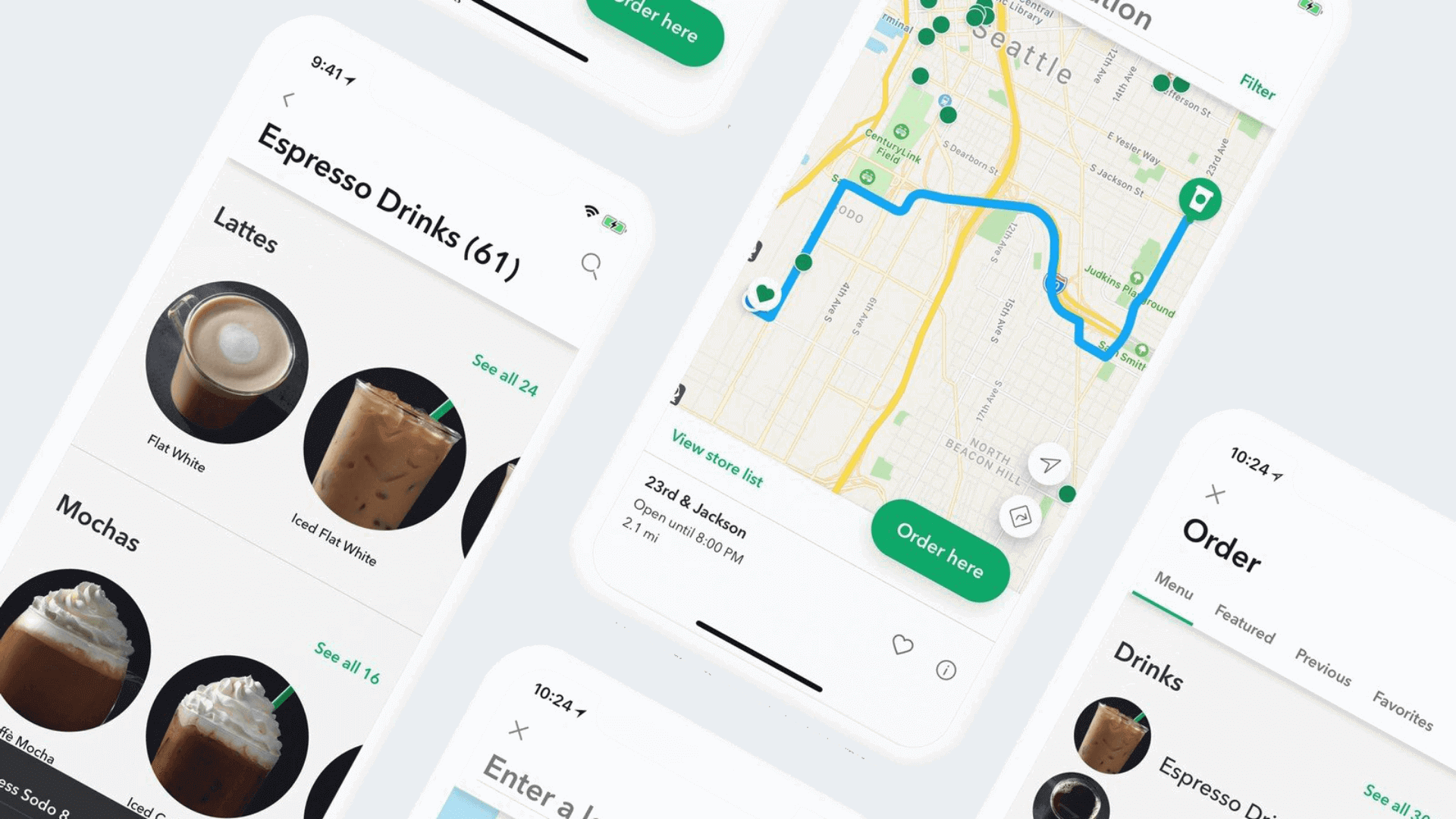
Customer retention is one of the most challenging parts of any business. In highly competitive niches like restaurants, businesses compete for customer loyalty, and special offers may play a significant role in customer decision-making. Creating an app that provides information about all available deals and discounts will definitely skyrocket customer retention.
The main idea of such a restaurant app is to entice customers with yummy offers.
Essential features:
- User profile
- Different types of rewards (discounts, complimentary beverages, gifts, special offers)
- Settings for user rewards (for the app’s admins)
- In-app menu
- Order online pick up offline
- Online payment
Examples of restaurant loyalty program apps: Starbucks
When creating a restaurant app, please note that some combine the characteristics of different categories. For example, you can combine restaurant location features with table booking functionality.
So, with the first step, you should identify the strategies of your competitors and find your value proposition.
Step 2: Set Business Goals & Strategy
So, what do you want to achieve with your app?
What are your business goals?
Answers to these questions will help you understand what app type you should choose. Don’t start app development just for the sake of development. You need to fully understand what you want to achieve and how the app will fit into your strategy. Setting up KPIs might be helpful, as it will make the choice of solution type easier.
Step 3: Choose a development team
This is, for sure, one of the most important steps when you create a restaurant app.
You can find numerous app builders that might entice you with the promise to create a food delivery app for free. However, such solutions are not the best option as they don’t allow you to create highly customized apps and scale them according to your business needs. You might end up hitting the ceiling far too soon and would need to create an app from scratch.
A far better option is to hire professionals to do the job. Here are a few options available:
- You can work with freelancers who’ll take on the development process. This option might turn into a disaster if you choose developers who don’t have the expertise and won’t deliver the necessary results.
- You can create your own IT department that will work on app development. Just keep in mind that this is an extremely time- and money-consuming option. You would need to handle the recruitment process, deal with bureaucracy, and pay salaries for a dedicated team.
You can also outsource restaurant mobile app development, the most cost-efficient option. You won’t have to deal with hiring and bureaucracy aspects. The company you outsource takes on all tasks and covers all the processes with a team of professionals. Outsourcing outside your own country might be a huge win in terms and quality and app development cost, as you would be able to get the best developers at lower prices.
Step 4: Decide on the App Functionality
After you’ve successfully identified your business goals and chosen the development team, it’s time to decide on the functionality of your future app. The final set of features directly depends on the results you expect to achieve with your application.
Features set may vary significantly, as you might need to combine features from different app types to achieve the required results. Be prepared that your app might not fit into a single app category but have the attributes of a few at once.
Let’s start with core features that you can use to create a restaurant app:
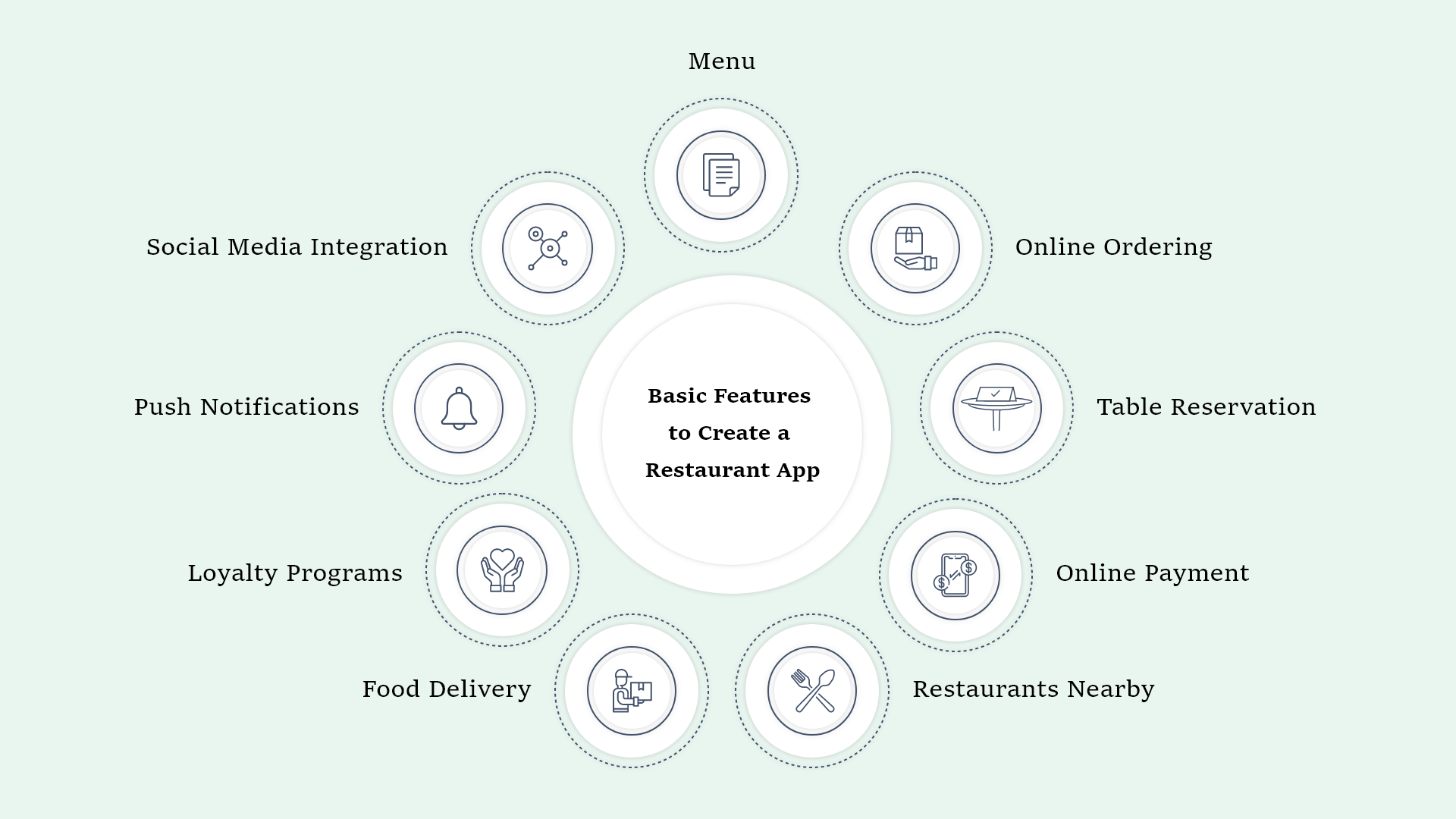
- Menu
Do you plan to build a restaurant ordering app? In this case, adding menu screens should be the first feature implemented. Your app should show how the dishes look like, provide the full list of ingredients, and display information about customization options.
When working on the app, you can address the task of menu design in different ways. One thing that must remain unchanged is the quality of dishes' images. The menu should also include a menu button for fast ordering.
- Online ordering
Online food ordering has never been so popular. Adding this feature to your restaurant may help you increase sales. Ordering functionality can be implemented in different ways. You can add the feature to order food online with delivery or preorder food and pick them up offline. It’s also possible to combine two features to attract even more customers.
- Table reservation
When developing the app, consider adding the feature to book a table online. We live in a world where voice calls are gradually moving into the past. Customers prefer to reserve tables online than make a call or do it in person.
- Online payment
Depending on the type of app you choose, the online payment feature may become a must-have option. It’s an excellent addition for pre-ordering when customers order online and pay for their order through your app. It’s a must-have functionality for food delivery applications.
- Restaurants nearby
If you are a big restaurant chain with several locations, consider adding geolocation to help customers find your sites. They will be able to find the closest restaurant with no problem.
- Food delivery
This type of app is more complex and usually consists of different modules: for customers, drivers, restaurants, etc. Still, the revenue of a food delivery app is higher than the other types. Read more about food delivery app development here.
- Loyalty programs
Loyalty programs are one of the best ways to make the most devoted customers feel special. You can offer bonuses, coupons, special deals, and discounts. These can be applied for online and in-restaurant orders. You can also offer some discounts for first-time customers to attract new audiences and then wow it with your exceptional services.
- Push notifications
While you can add this feature with further app development, consider adding it immediately. You can notify customers about their order status, upcoming special offers, active coupons, etc. Push notifications are a great way to stay in touch with your customers and entice them to check the app. However, the coin always has two sides, and it’s important not to be too pushy; otherwise, you risk annoying your customers.
- Social media integration
Social media can be used not only for creating a user profile and for sign-ins. You can allow users to share reviews and photos of dishes on social channels. Consider integrating social media marketing strategies for brand promotion.
If you want to create a restaurant app that will stand out, you need to consider adding advanced features. Below are listed some of them:
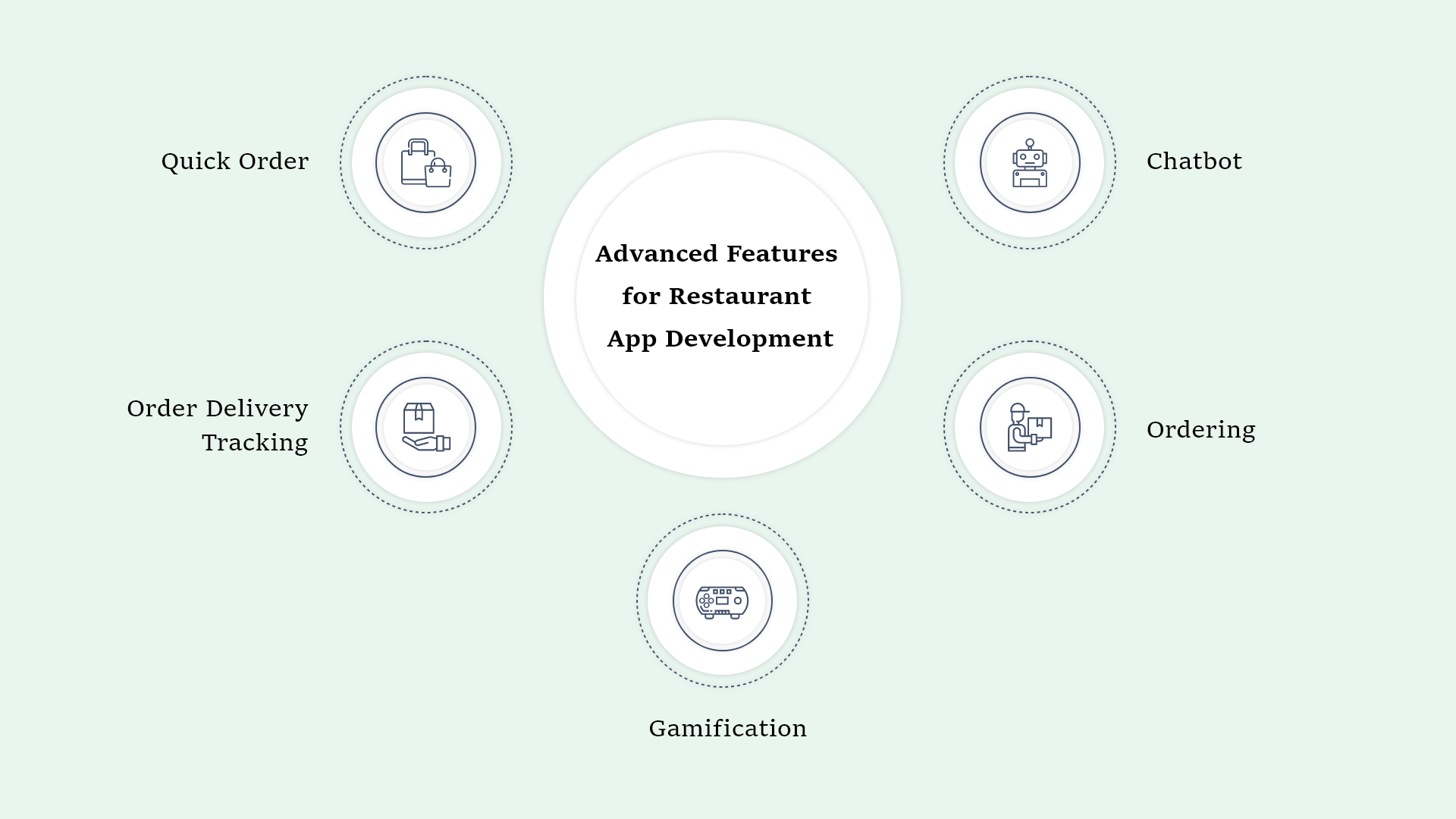
- Quick order
This functionality allows users to repeat their previous order in one click. This feature is a great addition for coffee shops and their regular customers.
- Order delivery tracking
If you plan to provide order delivery, consider adding the GPS tracking of the order while it’s been delivered.
- Chatbot
Chatbots are a great way to provide better customer service with quick answers to the most frequently asked questions. Numerous solutions on the market can be integrated with a restaurant app, so there is no need to develop them from scratch.
- Taxi ordering
This is definitely not a feature in MVP (minimum viable product), but it is an absolute love-to-have feature in the future. In-app taxi ordering allows customers to order a taxi without leaving your app, increasing retention rates twice. You can integrate the Uber API or other popular solutions available at your location.
- Gamification
This feature is great for improving customer engagement and retention. You can set up a system of achievements and challenges and even create tournaments. For example, you can reward them for every order with an in-app currency that customers can use in your store to pay for orders. There are different ways how this functionality can be implemented.
Please note that the final set of features will depend entirely on the key purpose of the app and the problems you want to address.
Step 5: Choose a Tech Stack
After you’ve successfully identified the set of features, it’s time to choose the tech stack for restaurant app development. You can either choose to create a native app for Android and iOS or a hybrid one that will work on both devices. The tech stack will differ based on your decision.
For example, you will need to use Kotlin or Java for Android development, Swift or Objective-C for iOS apps, and Flutter for hybrid app development.
Below is an example of the technology stack needed to create a restaurant app.
Mobile app development | |||
| Android app | iOS app | Hybrid app | |
| Programming languages | Kotlin or Java | Swift or Objective-C | Flutter |
| Back-end development | PHP, Java, Python | PHP, Java, Python | PHP, Java, Python |
| Toolkit | Android Studio, Android Development Tools | Apple Xcode | |
| Software development kit (SDK) | Android SDK | iOS SDK | Flutter SDK |
Third-party solutions | |||
| Cloud & servers | AWS (Amazon Web Services) | ||
| Database | MySQL, MangoDB | ||
| Payment methods | Stripe, Braintree, PayPal | ||
| Geolocation | Google Places API, Google Maps API, Apple Maps API | ||
| Social media | Facebook, Gmail, Twitter, Instagram | ||
| Push notifications | Firebase | ||
| Analytics | Google Firebase, AppsFlyer, Mixpanel | ||
| Taxi integration | Uber API | ||
| SMS | Twilio | ||
| Sendgrid | |||
| Mobile app development | Kotlin or Java (Android) Swift or Objective-C (iOS) Flutter (Android, iOS) |
| Back-end development | PHP, Node.js |
| Cloud & servers | AWS (Amazon Web Services) |
| Database | MySQL, MangoDB |
| Analytics | Google Firebase, AppsFlyer, Mixpanel |
| Payment methods | Stripe, Braintree, PayPal |
| Geolocation | Google Places API, Google Maps API, Apple Maps API |
| User registration | Facebook, Gmail, Twitter, Instagram |
| Push notifications | Firebase |
| Taxi integration | Uber API |
| SMS | Twilio |
| Sendgrid |
The company you work with will help you create an architecture of your application and choose the required technology stack.
Step 6: Design a Restaurant App
So, now that you know how to build a restaurant app, what’s next?
Of course, you need to create the app design. You need to address one issue with the design – it should offer a smooth user experience.
Restaurant app design consists of different steps, including:
- Research – competitor analysis, understanding the latest trends and best practices will help you create a restaurant app that users will love.
- UX design – this stage involves the work on sketches and UX wireframes. These are the basis of your application and define how users will interact with the app. The main task of this phase is to create user-friendly navigation and elements layout.
- Visual design – at this stage, your app gains its visual identity. Designers create mood boards and UI mockups based on the wireframes created at the previous stage.
- Branding – the creation of a unique logo and app elements if that’s required.
- Animations and illustrations – this is an optional service that allows you to make your app stand out with its vivid illustrations or animations.
One designer may cover all of the tasks above or a team of designers will do the job.
Step 7: Develop an App
The development stage supposes the implementation of the features, integration of third-party APIs, making UX work. In other words, turning your idea into a real application.
Step 8: Test, Deploy and Launch the App
All the features are tested before releasing the app’s first version to the market, and bugs are hunted down and fixed. Testing and bug fixing ensures that your app works without a hitch. After everything is sorted out, you release the application to the app stores.
Step 9: Start Marketing & Promotion
If you haven’t launched your marketing strategy by this moment, time to start rolling it out. Tell the world about your new app through all relevant marketing channels, including social media marketing, content marketing, influencer marketing, etc. Before you move in either of the directions, make sure that the channel you choose will help you connect with your target audience.
Step 10: Collect & Analyze User Feedback
App release doesn’t mean the end of app development. Successful applications share one secret – their creators continue working on them even after the release. They analyze customer feedback and apply changes to meet customer expectations better. You should follow suit and pay attention to what users say about your application.
Step 11: Start Ongoing Development & Support
As mentioned, development is an ongoing process that can go on for months or even years. Implement changes and improvements based on customer feedback, plan to add new functionality, release it and analyze the customer feedback once again. Optimize your app for the latest version of iOS and Android, and don’t forget about updating security protocols.
That’s your secret to creating a restaurant app that will support your business efforts.
Explore Innovative Ideas for Restaurant App Development
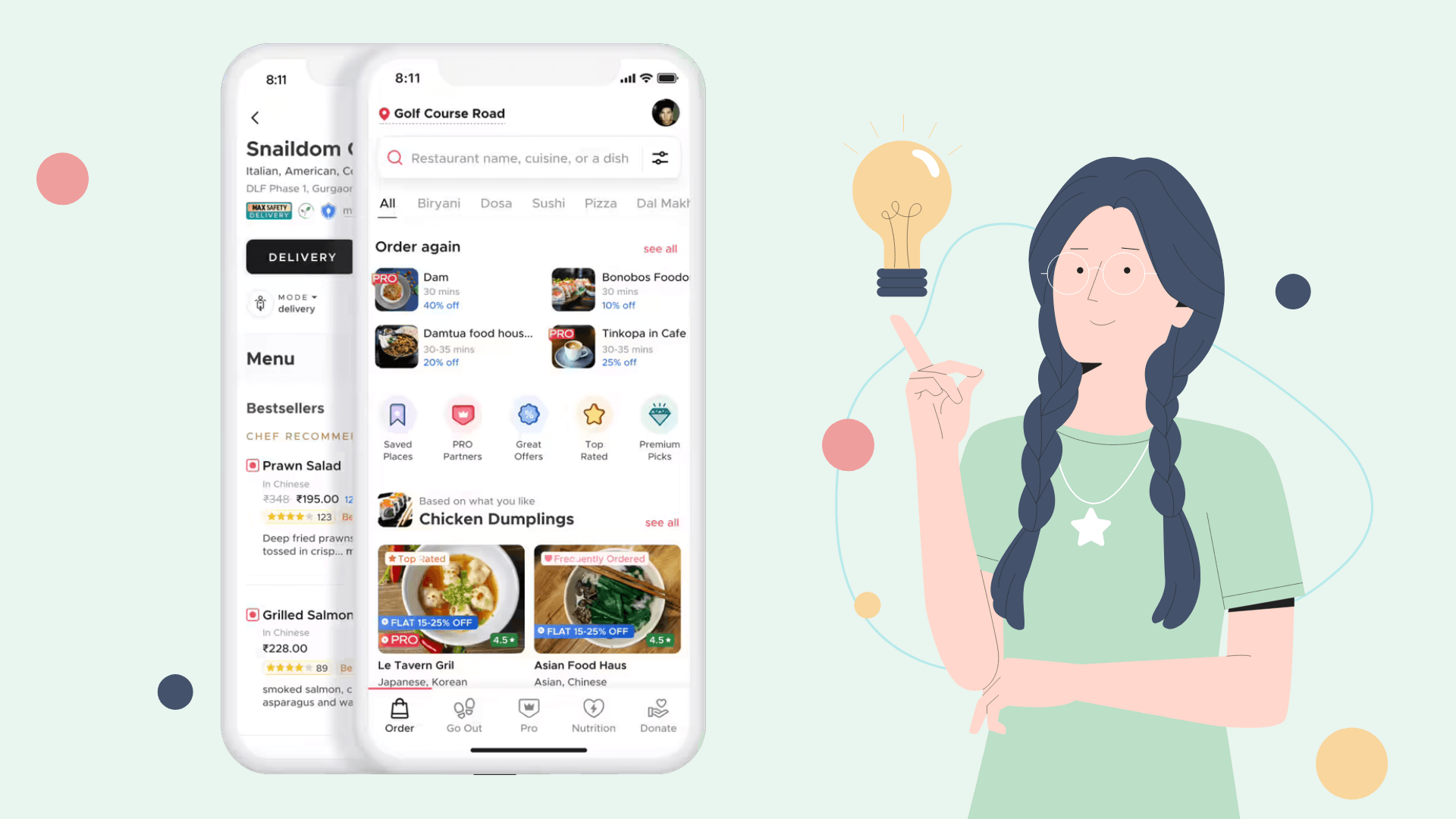
Now, let’s discuss some innovative ideas you can use during the development process. These will help you create a restaurant app that keeps users more engaged.
- Dish customization
Sometimes, customers might want to customize their order, add some ingredients to the dish or, on the contrary, ask you to remove them from a dish. By allowing them to do that with an app, you can avoid mistakes that can lead to dangerous consequences if a customer is allergic to one of the ingredients.
- Recipe app
Combine the standard functionality with the recipes book. You may share some of your recipes, secret techniques, and recommendations. This will turn your app from a traditional food ordering solution into an app that users want to engage with.
- Kid’s menu
Do you serve dishes for kids? Then add them to your application. This feature is especially useful for family restaurants. Just keep in mind that you will also need to provide a detailed overview of all the ingredients for each meal.
- Restaurant management app
Why not make workflow a little bit easier by creating a platform for managing back-office processes? Such an app can help automate time-consuming routine tasks, manage and keep track of supplies, schedule kitchen equipment repair frequency, track analytics and insights, keep track of table reservations, and much more.
- Order and delivery marketplace
UberEats, Zomato, and DoorDash are some of the most popular food delivery aggregator apps in the world. You might also want to create a food delivery app that will connect restaurants, delivery companies and customers. The app will operate as an intermediary between all these people.
- Call a waiter
You probably can remember a time or two when you were ready to make an order in a restaurant, but the waiter was nowhere to be found. The call a waiter option can solve the problem for your establishment. By scanning a QR code, customers send a push notification to the waiter’s smartphone and shorten the wait time.
- AR
Augmented reality solutions are on the rise. You can also use the technology to improve customer experience. Possible options include the ability to preview the restaurant’s interior, make ingredients check, or just entertain customers while they are waiting for their meals.
How Much Does It Cost to Create a Restaurant App?
The cost of restaurant app development may vary based on a number of factors. Typically, small restaurant app development costs $2,000-8,000, medium restaurant app development with additional features costs $20,000-40,000 and a restaurant app development cost for a few operating systems, custom design and complex features is $50,000-$280,000.
So, why is there such a huge price range, and what influences the price? Let’s find out.
Restaurant app development process consists of different stages. Generally, all the tasks are divided between Discover and Development stages.
Discover stage includes the following services:
- Business analysis
- Software architecture
- UX and UI
- Project management
Development stage consists of:
- Early planning
- Development
- QA and testing
- Project management
All these stages together form the final restaurant app development cost.
Below is a table presenting app cost based on the features and supported platforms:
Basic app (simplest functionality, 1 platform) | Medium app (more complex design and features, 1 platform) | Large app (complex design and features, 2 platforms, ongoing development & support) | |
| Cost | ~$50,000 | ~$140,000 | ~$280,000+ |
| Timeline | ~3-5 months | ~5-9 months | ~9+ months (ongoing) |
Please note that the above cost is approximate. The final price to create your app will depend on a number of factors. Get in touch with us for a detailed restaurant app development cost estimation.
Create a Restaurant App: Bottom Line
As you can see, restaurant app development is a complex process comprising different stages. If you want the process to run smoothly and without unexpected pitfalls, choose an experienced software development company for the job.
Benefits of Developing a Restaurant App, Restaurant Mobile App Development, Create a Restaurant App, Ecommerce apps, Smart Watch Application Development, Custom eLearning Development, e-learning app development, How to Create a Voice Translation App, AR Apps, Mobile App, App Design Cost, Development Team, IoT app development, Wearable Apps
Do You Want To Create a Restaurant App For Your Business?
Dive into the world of restaurant app development
Our Expertise Covers:
✅ Ordering system
✅ Loyalty programs
✅ Delivery services
FAQ
There are a number of reasons why you would want to create a restaurant app. In most cases, businesses choose this option to improve customer loyalty, simplify the payment process, increase sales, provide food delivery services, offer special deals, and get direct customer feedback.
The restaurant mobile app development process consists of different stages. You start app development with market research, identify your business goals, and choose an app development company. Then you can move on to selecting the restaurant app features and tech stack, creating the design, and building the codebase.
Restaurant app development costs may vary from $10,000 to $280,000 and even go beyond. Usually, restaurant app development services cost around $50,000 for a single platform.
Depending on the app’s complexity you want to create and the number of features that should be implemented, the development process may take from 4 to 9 months and go beyond. A simple app for a single platform usually takes around 3-5 months to create.
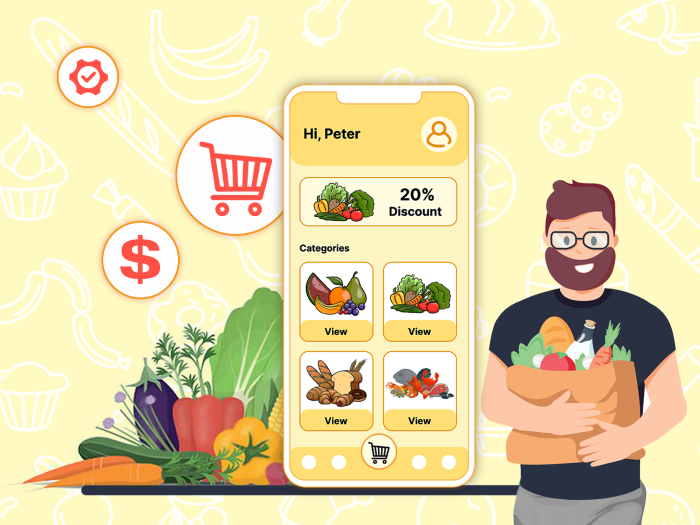 Grocery Delivery App Development: Tips, Cost & Steps
Grocery Delivery App Development: Tips, Cost & Steps
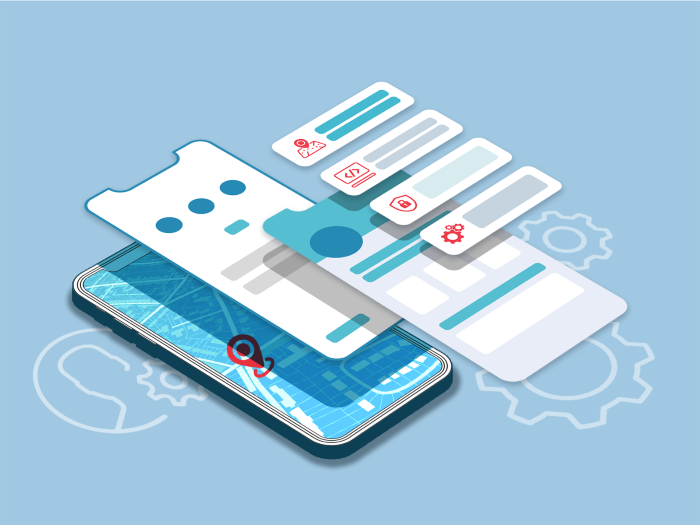 Must-Have Uber App Features: Building a Ridesharing App
Must-Have Uber App Features: Building a Ridesharing App
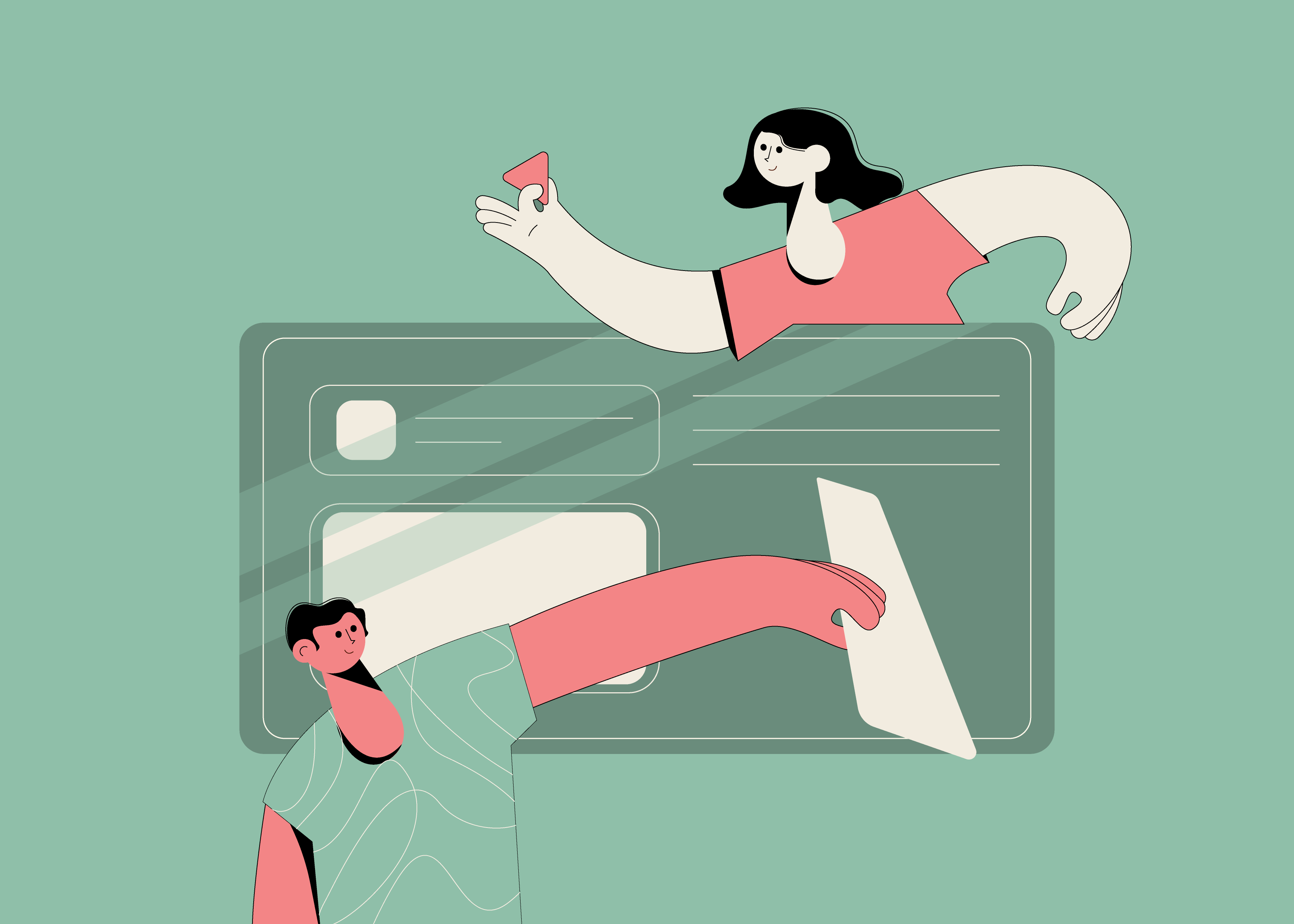 How to Make an App Like Uber: Features and Tech Details
How to Make an App Like Uber: Features and Tech Details